Per a Bloomberg article entitled World’s Biggest ETF See Record $21 Billion Flow on Stock Rally, the ETF SPY saw a massive $20+ billion inflow of funds last Friday. Interestingly, the Nasdaq 100 (QQQ) had a record $5.2 billion outflow. At the same time, the equal-weighted S&P 500 (RSP) saw inflows of $2.1 billion last week. The flow differences are enormous. What gives?
Per Bloomberg, “Friday was the final trading day before the S&P 500 and Nasdaq 100’s rebalancings went into effect, which can prompt funds managing trillions of dollars to readjust to align with new index compositions. Roughly $5 trillion of options also expired on the same day, which generally sees Wall Street managers roll over existing positions or start new ones.” The Nasdaq 100 is up 53% this year, the S&P 500 (SPY) rose 25%, and the equal-weighted S&P 500 is up 12%. Given the massive performance imbalances, many retail and institutional money managers are taking profits and rebalancing. Todd Sohn, from Strategas, thinks the large flows in and out of SPY, QQQ, and RSP last week may be investors “seeking to further reduce exposure to Magnificent 7-type weights as 2024 begins.”
We caution you not to read too much into year-end machinations. Todd may be correct, but the preponderance of passive investment strategies coupled with such significant index performance discrepancies makes for massive year-end rebalancing needs. Todd may be onto something if we see similar trading behavior throughout January.
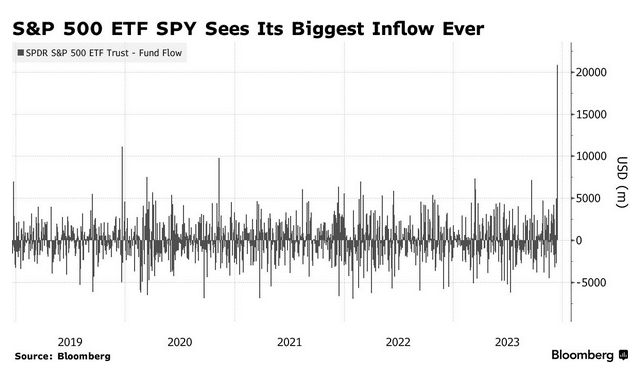
What To Watch Today
Earnings

Economy

Market Trading Update
As we discussed yesterday, record highs for the market are in sight, and there seems to be nothing to stop that run currently. However, one thing that could put a break on the rally is a reversal in the recent dollar weakness since the beginning of November. Going back to October 2022, the narrative began about the “de-dollarization” of the U.S. economy. While we argued that it was mostly a non-sensical argument, the weakness in the dollar contributed to the rally in U.S. equities. Unsurprisingly, the stock market peaked in July along with the bottoming of the dollar index.
The recent surge in the stock market coincides with a sell-off in the dollar. The dollar weakness and the more overbought conditions in the equity market have become a bit more extreme currently. While the dollar could weaken further in the near term, we are likely approaching a point of a reversal in the dollar, which would correspond with a 3-5% correction in the stock market.
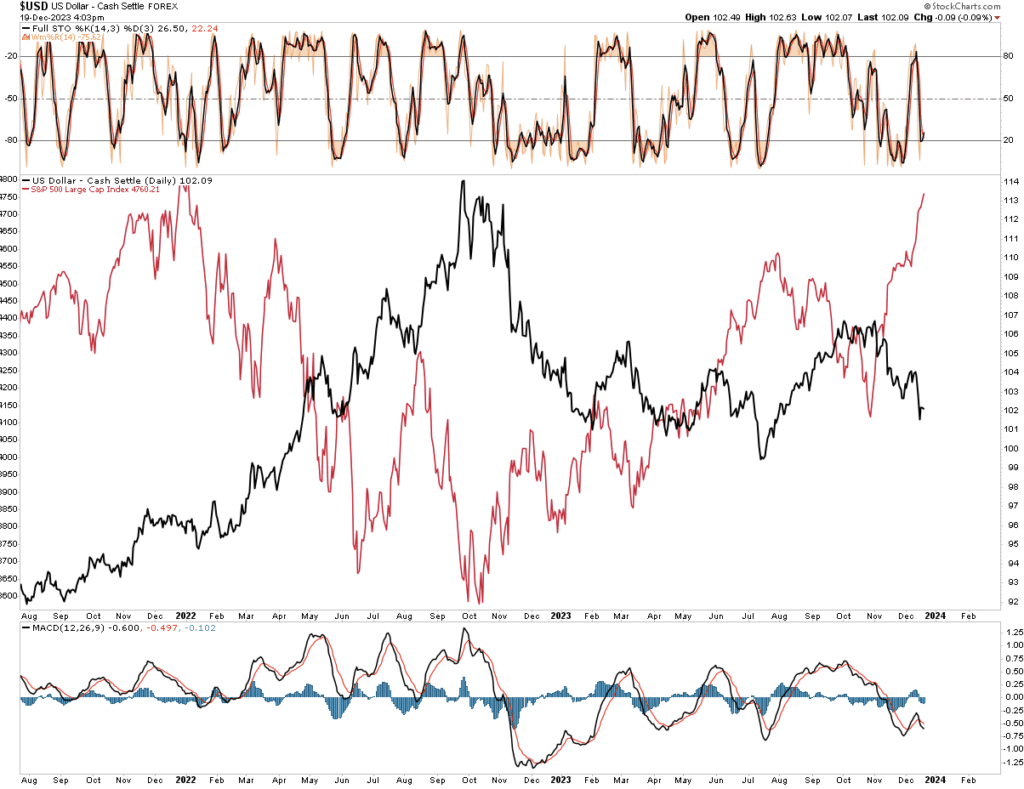

Almost-Homebuyers Get Cold Feet
Per the latest from Redfin, roughly 45,000 U.S. home purchase agreements were canceled in November. As the Redfin graph below shows, that accounts for 16.9% of homes under contract. Such is the most since at least 2017 and even eclipses the surge in March 2020. With mortgage rates falling, we suspect this number may decline.
While on the topic of home sales, the second graph from Redfin shows the absence of new listings over the last year is finally starting to turn up. Lower mortgage rates are making it a little easier for some homeowners to sell their houses and assume a new mortgage for a new purchase. As a result of increasing inventory, the average months of supply of homes on the market is up to 4.1 months. That stands about two months higher than this time in 2021 and 2022. However, it is still a relatively low number compared to pre-pandemic times.
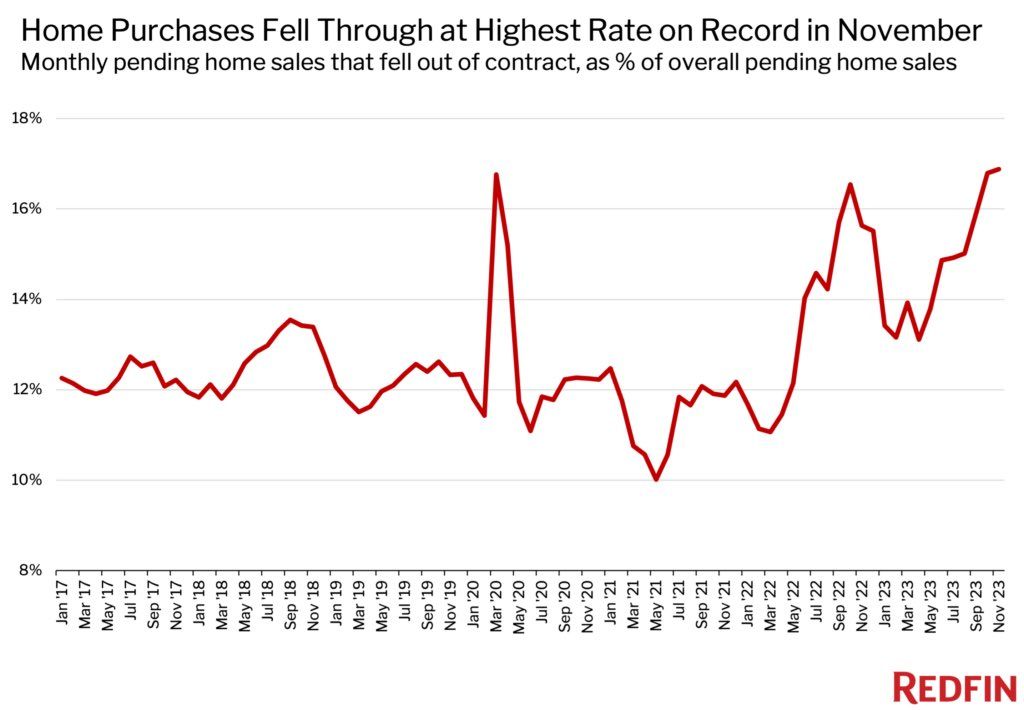
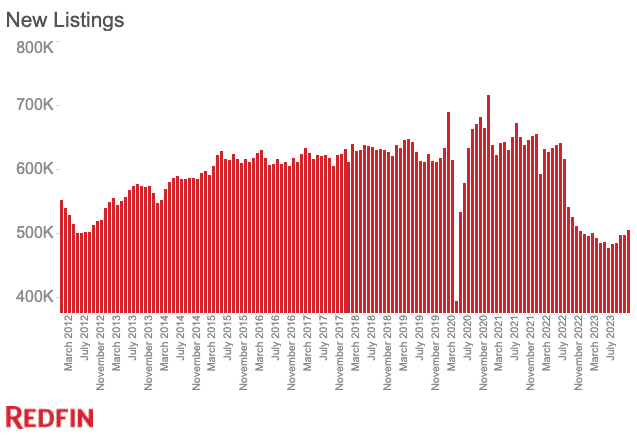
Credit Card Borrowers Update
Given the importance of credit to personal consumption, it’s worth reviewing the latest report from the Lending Club. The title of the report is daunting: Nearly 60% of Credit Cardholders in the U.S. Live Paycheck to Paycheck. Equally problematic, they report that 40% of those with “super-prime” credit scores live paycheck to paycheck. The graph below breaks down the data. Per the report:
Consumers living paycheck to paycheck own nearly 60% of the credit cards in the U.S. Moreover 80% of paycheck-to-paycheck consumers own at least one credit card, and two credit cards on average.
The data is more or less in line with last year. Accordingly, the trends are not worsening. With the unemployment rate historically low and jobs relatively easy to find, the data is not problematic for credit card companies. However, if unemployment turns up, the delinquency and default rates will follow, potentially posing problems for the banks.
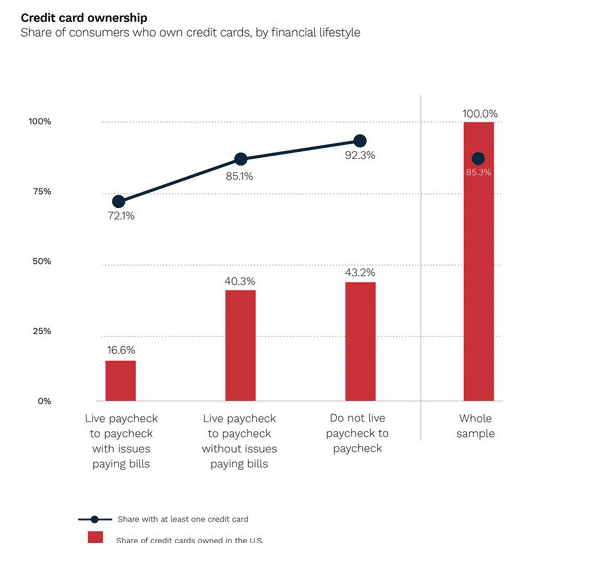
Tweet of the Day
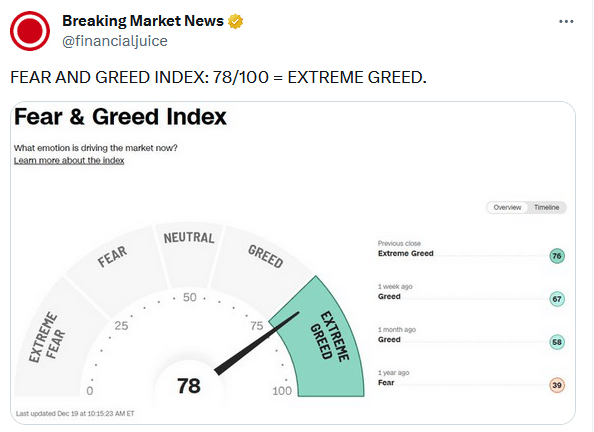
“Want to have better long-term success in managing your portfolio? Here are our 15-trading rules for managing market risks.”
Please subscribe to the daily commentary to receive these updates every morning before the opening bell.
If you found this blog useful, please send it to someone else, share it on social media, or contact us to set up a meeting.
Also Read

















